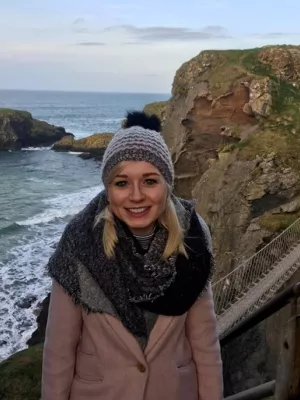
Ciara Dwyer
Postdoc

Prey capture by the non-native carnivorous pitcher plant Sarracenia purpurea across sites in Britain and Ireland
Författare
Summary, in English
The carnivorous pitcher plant Sarracenia purpurea is native to North America, but has been introduced into Europe, where it is now widespread. Understanding of how this species functions in its non-native range is limited. We measured pitcher morphology and prey capture by S. purpurea in its non-native range in Britain and Ireland. Pitchers were removed from different plants at each of six bogs covering the species range in Britain and Ireland (n = 10 pitchers per site). For each pitcher we counted and identified every prey item and took measurements of morphology. We also compiled prey capture data for existing studies in Europe and North America. Prey capture characteristics varied between sites in Britain and Ireland. The amount of prey captured varied 20-fold between sites and was partially explained by differences in pitcher size; larger pitchers caught more prey. The primary prey was Formicidae, Diptera and Coleoptera. At the rank of order, prey composition varied between bogs, some contained mainly Formicidae, some mainly Diptera and some a mix. Prey capture was less evenly distributed at some bogs compared to others, suggesting more specialization. There was no overall difference in prey capture (composition or evenness) at the rank of order between plants in Europe compared to those in North America. At the rank of species, prey capture varied between populations even within the same order. This study demonstrates a large amount of variability between sites in prey capture characteristics. This may reflect different site characteristics and/or plant strategies, which will likely impact plant function, and may impact the inquiline community. In terms of prey capture at the rank of order, S. purpurea functions identically in its non-native range. This supports its use as a model system in a natural experiment for understanding food webs.
Avdelning/ar
- Centrum för miljö- och klimatvetenskap (CEC)
Publiceringsår
2022-12-13
Språk
Engelska
Publikation/Tidskrift/Serie
Ecology and Evolution
Volym
12
Issue
12
Dokumenttyp
Artikel i tidskrift
Förlag
Wiley-Blackwell
Ämne
- Botany
- Ecology
Status
Published
ISBN/ISSN/Övrigt
- ISSN: 2045-7758